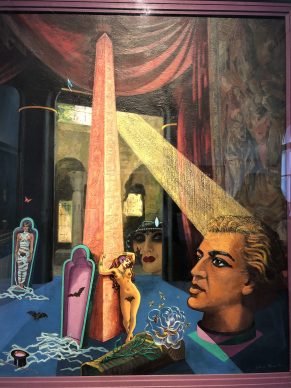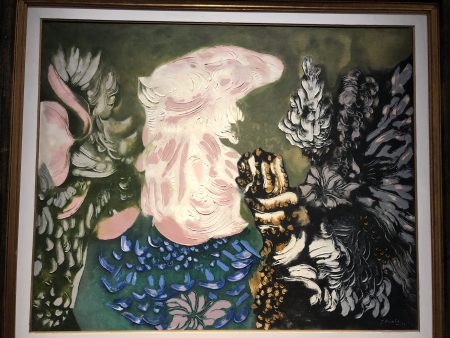Schwarz has now gone down in art history, for two reasons.
Primarily because in 1964, in exchange for 10 million lire at the time paid over the course of a year, he made replicas for Marcel Duchamp of a group of 14 readymades, including the famous upside-down urinal, “Fountain”, whose original 1917 version was lost.
When a now rather elderly Artur Schwarz is asked how this happened he simply replies that Duchamp at the time was a completely forgotten figure, and that this act contributed towards putting him back on the scene (the scene itself took place during a debate at Christie’s in Paris).
Arturo Schwarz is also the author of Marcel Duchamp’s catalogue raisonné.
The dealer donated the complete series of replicas from 1964 to the Israel Museum in 1972.
In 1998, following Saddam Hussein’s attacks on the country during the Gulf War, he decided to donate his entire collection, comprising 900 artworks, to the same institution.
Today, Adina Kamien-Kazhdan, senior curator at the Israel Museum who is also the author of a very well-informed work on the remaking the ready-made (1) explains that “this sale is necessary in order to make new acquisitions, to complete the documentation on surrealism and to allow the museum to feature other artworks by the same artists in its collections.”
At this point in time there is clearly a two-tier market in the area of surrealism.
On the one hand there are the superstars who achieve prices in the millions of dollars, from Max Ernst to Dali via Miro and Magritte.
And on the other hand there are the lesser-known names, reflected perfectly in the auction on the 8 May.
Davide Nahmad, whose family’s galleries have branches from New York to London, is one of the most powerful modern art dealers in the world today.
Not to mention its likely involvement in the guarantees, he just sold a painting by the Russian constructivist Kazimir Malevich at auction on 15 May for the record price of 72.2 million euros (it was bought in 2008 for 47.1 million euros) but on 8 May he also bought a painting for 96.7 million euros by Picasso from 1905, “Young Girl with a Flower Basket” («Fillette à la corbeille fleurie »), which belonged to the Rockefeller collection and is due to feature in the highly anticipated exhibition on Picasso’s blue and rose periods in September at the Musée d’Orsay.
He justifies making this acquisition, which he confesses was one of “the great highlights of my life”:
For Davide Nahmad there is, on the one hand, the great surrealists, he cites Miro, Ernst and Magritte in particular, “whose creative apex took place in the 1920s and ’30s, and then there’s the rest of the group led by André Breton, the movement’s theorist, which is just made up of followers”.
Clearly the market prices would seem to prove him right.
There are, however, other specialists who don’t share his view.
Alyce Mahon is a Cambridge academic and an independent curator. She’s preparing for an exhibition on Dorothea Tanning (1910-2012) the American surrealist who was married to Max Ernst) in October 2018 at the Reina Sofia Museum in Madrid, which is then due to travel to the Tate Modern in London.
She explains: “There’s a current trend that seeks to reduce the surrealist movement to just a few big names. We must move on from these stereotypes. Dorothea Tanning, for example, has an exceptional body of work. She occupies a particular feminine mental space where the woman is seen as a witch. Her work is also steeped in literature”.
The artwork by Tanning due to be presented on 8 June, dating from 1965, is perhaps not the most revealing of her style. It’s a small painting made in an expressionist verve, estimated at 8000 euros.
But the catalogue features a small-format work that is reflective of the style of her husband Max Ernst (1891-1976), an oil on board from 1925-26 estimated at 80,000 euros.
One of the most remarkable artworks in the sale is a painting by the French artist Clovis Trouille (1889-1975). He is known for his attacks on the church and his evocation of the beguiling power of sex. André Breton describes him as the “grand master of anything goes”. His work christened “The Sleepwalking Mummy” (« La momie somnanbule ») dating from 1942 features a portrait of Breton’s profile in the foreground seemingly hypnotized by an undulating nude woman. (Estimate: 40,000 euros).
The Parisian dealer who’s a specialist in the subject, Marcel Fleiss from the Galerie 1900-2000, points out that today “only four artworks by Trouille feature in museums and neither Moma nor the Centre Pompidou have any of his works, despite his importance”.
Among the potential heirs to the surrealist movement in the exhibition we note the presence of the American painter William Copley (1919-1996), another sex enthusiast currently particularly prized by the Prada foundation, who are displaying him at the new premises of their permanent collection in Milan (cf the report). “Loveland” from 1962 depicts a female pianist seen from behind whose suggestive silhouette is created using a collage of black lace, estimated at 40,000 euros.
The first biographer of Marcel Duchamp was his friend Robert Lebel (cf the report), whose son Jean-Jacques (born in 1936) became an artist. His work “The Woman Flooder” (« L’inondeuse »), a colourful composition from 1959 with sexual undertones, is estimated at 7000 euros in the sale on 8 June.
Jean-Jacques Lebel is currently the subject of an exhibition at the Centre Pompidou.
(1) Remaking the readymade. Duchamp, Man Ray, and the Conundrum of the Replica. Routledge. Taylor and Francis Group.
Support independent news on art.
Your contribution : Make a monthly commitment to support JB Reports or a one off contribution as and when you feel like it. Choose the option that suits you best.
Need to cancel a recurring donation? Please go here.
The donation is considered to be a subscription for a fee set by the donor and for a duration also set by the donor.

















